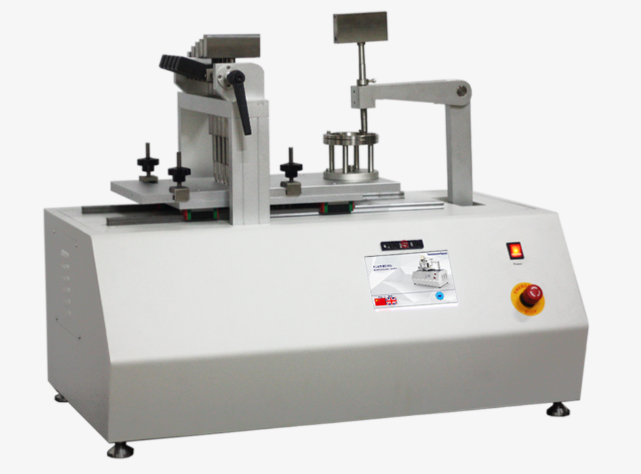
Multifunctional scratch tester
2025/08/04
A multifunctional scratch tester is a device used to evaluate the scratch resistance of various material surfaces. By simulating scratching behavior under different conditions, this device can test and analyze a material's wear resistance, scratch resistance, and other properties.
This tester typically features multiple testing modes and functions to accommodate different materials and testing requirements. For example, it can simulate scratching tips of various shapes and materials, such as fingertips, blades, and coins, to simulate actual scratching. It can also adjust parameters such as scratching speed, pressure, and stroke to simulate varying degrees of scratching.
Multifunctional scratch testers are widely used in material R&D and quality control for plastics, coatings, automotive, and electronics. For example, in the automotive industry, this tester can be used to test the scratch and mar resistance of plastic interior and exterior trims.

Scratch Principle:
The Multifunctional Automotive Interior Scratch Tester is suitable for testing the scratch resistance of various automotive interior materials. It integrates three domestic test standards (the five-finger scratch method, the 100-grid method, and the plastic scratch method). This test method is used to determine the resistance of a surface material to damage caused by a scratching finger. Based on the potential contact of nails or other hard objects during use, scraping fingers of varying materials are used to apply pressure to the sample surface in a specified direction, stroke, and speed. The scraping head and sample move relative to each other, producing a unidirectional, non-reciprocating, linear scraping trajectory, with the scratches remaining parallel. The material's scratch sensory grade, color difference between the scratched and unscratched areas, or the minimum scraping force required to damage the sample surface are ultimately evaluated. The instrument consists of a motor drive mechanism, scraping assembly, and sample clamping fixture. The scraping assembly includes a scraping bracket, scraping fingers, scraping finger positioning sleeves, and a pressure device (weight and weight support rod). The instrument allows for the flexible installation, replacement, and removal of scraping fingers of varying specifications, enabling uniform, unidirectional, linear scraping motion under varying loads. The instrument utilizes an embedded system and a human-machine interface to automate the testing process. Its precision servo motor and ball screw drive ensure precise control of scraping speeds consistent with relevant standards. The scratch finger is made of tungsten carbide to extend the instrument's service life. The instrument is constructed of aluminum alloy and stainless steel, resulting in a simple, lightweight, and corrosion-resistant appearance.
Applicable Standards:
GB/T 2918 Standard Environment for Conditioning and Testing Plastic Specimens
GB/T 6151 Color Fastness Tests - General Test Principles
GB/T 8424.3 Color Fastness Tests - Calculation of Color Difference
PV3952 Scratch Resistance Test Method for Volkswagen
GS97034 Surface Testing of Automotive Interior Materials, etc.
Please note that the use of a multi-function scratch tester requires compliance with operating procedures to ensure accurate and reliable test results. Different tester brands and models may have different features and applicable ranges, so choosing the right tester is crucial.
In addition to basic scratch testing functions, multi-function scratch testers often feature advanced features such as temperature and humidity control, and environmental simulation. These features can simulate more complex and realistic operating environments, enabling more accurate assessment of a material's scratch resistance.
For example, the temperature control function can simulate the scratching behavior of a material at different temperatures, which is crucial for evaluating its performance in high or low temperatures. The humidity control function can simulate the scratching behavior of a material in either humid or dry environments, which is very helpful for evaluating its performance in humid environments.
In addition, the multifunctional scratch tester is equipped with an advanced control system and data acquisition system, which monitors and records various parameters during the test, such as scratching speed, pressure, stroke, temperature, humidity, etc., in real time for subsequent data analysis and processing.
Previous: Horizontal and vertical combustion tester
N e x t : How does ABB4600 Sprayed Robot Covers protect the robot?



